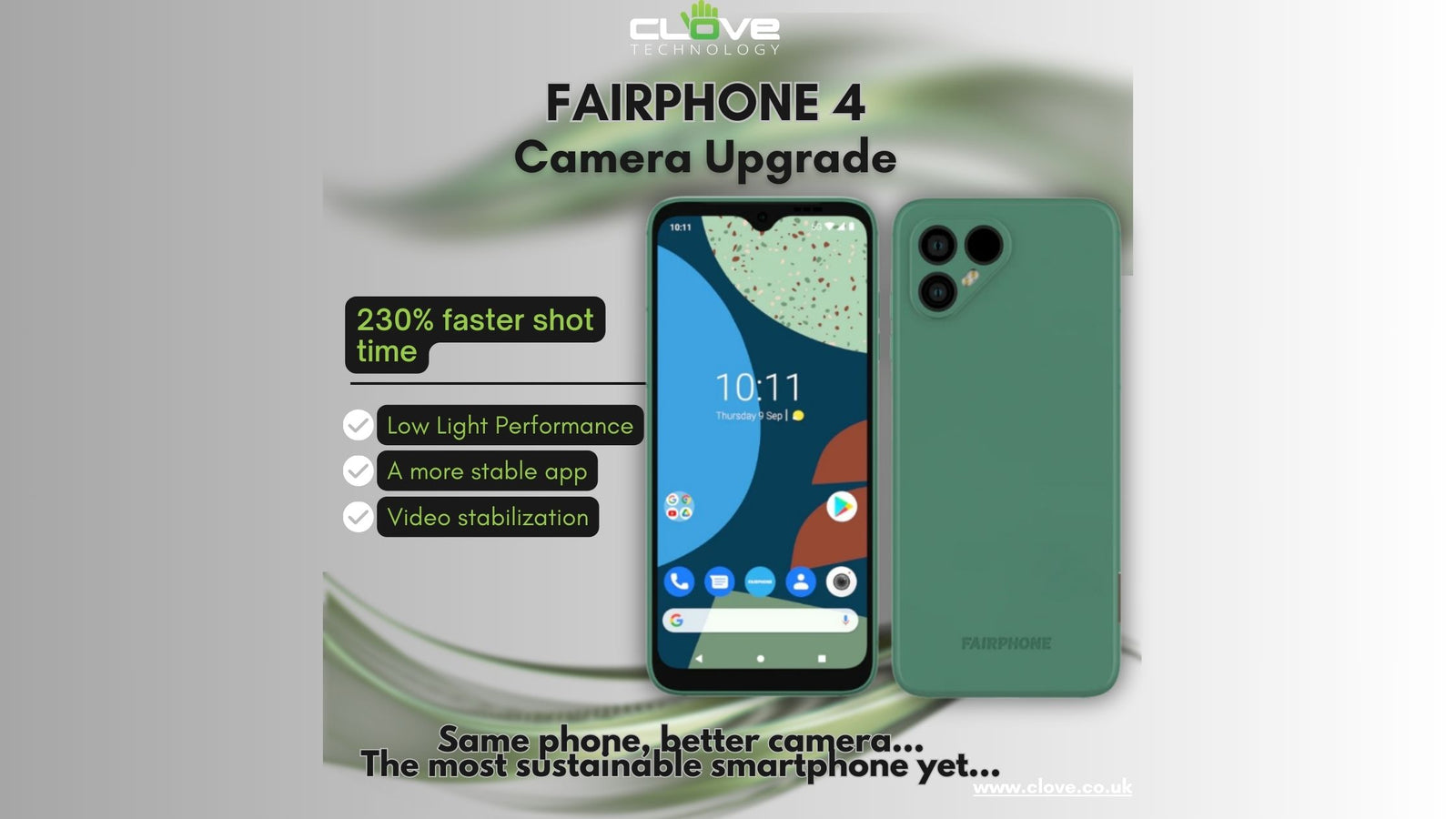MHL is dead. Long live (super)MHL?
A few years ago, MHL was being touted as the new standard in mobile video output.

With some clever wire signalling wizardry, it allows you to transmit audio and video independent of the connectors between devices. For most of us that meant being able to output from a microUSB port on compatible phones and into HDMI ports on TVs, monitors and projectors.
To begin with it was a little clunky, with adaptors commonly being used that required external power. The standard quickly evolved though and soon enough it was possible, on phones like the Galaxy S4, to be able to hook up to a TV with just an adapter and HDMI cable, so long as the phone had enough battery left.
With certain compatible equipment, all that was needed was a cable with different connectors either end – no adapter!
Some manufacturers didn’t get on board; LG for instance choose to implement a slightly different standard – Slimport. There were pros and cons to both options, however MHL saw the most widespread adoption and consumer understanding.
In the last year or so though we’ve seen MHL disappear off the spec. sheets for many flagship phones. Most notable is the most recent Samsung Galaxy S6 range and Note 5. Once the champion of MHL tech and responsible for a huge number of shipped MHL compliant devices and accessories in the consumer space, Sammy has left it behind. So what gives?
The rise of wireless
Using cables is never the most ‘elegant’ solution in the modern wireless world. It does all but eliminate lag and isn’t susceptible to the same kind of interference and buffering that can occur with wireless solutions, however wireless has extra convenience and is a lot easier to market as a more modern option.
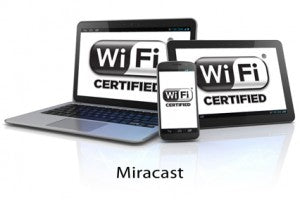
Android provided native support for WiFi-Direct Miracast from Android 4.2 and since then, almost every Android phone and tablet will have an option for ‘screen mirroring’ somewhere in the settings.
This signalled the start of the decline for MHL, which requires manufacturers to use specific (read: more expensive) hardware. A free to use software feature built in to the OS was always going to win out.
Miracast acts like a wireless HDMI cable and is a natural successor to cables. Using a direct ad-hoc connection between both devices, rather than routing over a main network, it also remains quite responsive and stable.
All Miracast needs is a compatible receiver. Many new TVs have this built in and Miracast receivers have become relatively cheap. You can then connect and share your screen contents in real time.
The only real downside to Miracast right now is the slight lag, so it isn’t great for streaming games. There’s also an upper limit on the resolution of 1080p. For presentations, simple browsing or showing some pictures though it’s an excellent choice.
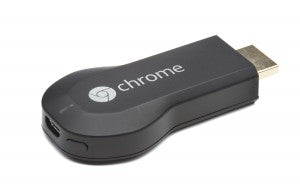
The other massively mainstream option for sharing is the Chromecast dongle. Different to Miracast, Chromecast allows you to throw a content link from certain apps and let the dongle do all the actual computing and streaming.
Over the last year, there’s also been growing support for direct screen mirroring with a Chromecast dongle. This still remains different to Miracast as the traffic goes through your router, however it’s still very quick and simple to implement and is independent of the phone’s hardware.
For all the convenience of wireless options, cabled alternatives still won’t go away completely. MHL remains and has been updated in specification twice quite recently.
MHL 3.0
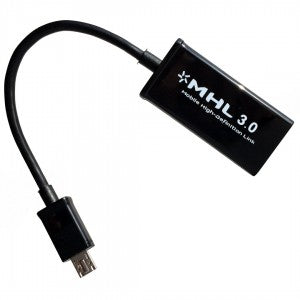
The 3.0 version was made public in late 2013 and added support for 4K streaming, high-speed data channel, control of the phone with a TV remote (RCP), HID support for peripherals, power charging up to 10W, HDCP 2.2 content protection, 7.1 surround sound and support for simultaneous multiple displays.
That’s a lot of new features for tech that some seem to think isn’t relevant anymore.
Not many manufacturers carried on with MHL at this time, however Sony have ensured that it remains installed on the entire Xperia Z range of phones. This is why the upcoming Z5 Premium has been touted as the first true 4K mobile device – it can record at 4K, has a 4K display and can also output in true 4K with MHL 3.0.
You’ll need an MHL 3.0 adapter of course, these remain relatively simple to obtain online from cable specialists. You can also use older adapters and ‘downgrade’ to MHL 1 or 2 as the standard is backwards compatible.
Make way for superMHL
So what does the future hold for MHL? Well a further update to the standard was released late in 2014 called superMHL.
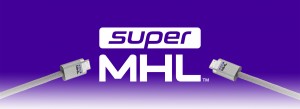
Adding to the previous specification, superMHL now has support for 8K(!) written into the specification, as well as extra compatibility for high-quality AV features such as deep colour support up to 48-bit colour depths, a wider colour gamut and High-Dynamic Range (HDR) support.
superMHL also addresses the fact that connectors in mobile, home entertainment and computing are changing and are likely to converge further in the coming years.
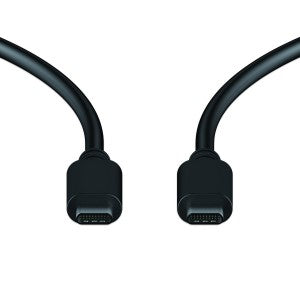
USB Type-C will be making more of an appearance in the next year on mobiles and computing products. HDMI 2.0 will feature more heavily too – it is required for 4K but currently underutilised with many UHDTVs currently only having the one port, with the rest being v1.4 or lower.
The superMHL standard allows for transmission over USB Type-C (via the ‘alternate’ mode), with HDMI 2.0 and microUSB as a source, all of which can be converted through to HDMI at the receiving end.
There is also a new full-size 32-pin superMHL connector, although this won’t be on mobile and is likely to be used in specialised ultra-top-end audiovisual equipment at first.
So when will we see new superMHL capable phones?
This all depends on if manufacturers pick up the new standards and work with them. To date Sony have been the only premium smartphone manufacturer to 100% commit to MHL 3.0 on all their flagship phones. Whether they and anyone else transition to superMHL in 2016 is to be seen.
What we do know is that as of August this year, Lattice Semiconductors announced the OEM physical hardware that should enable superMHL in future mobile products, so the roadmap for this is now open.
It’s a shade too late to be included in the first wave of USB Type-C phones such as the Nexus 5X & 6P or Microsoft Lumia 950 & 950 XL, however it does mean that should anyone want to experiment in a flagship next year, the technology is available.
Perhaps it will be a new Nexus. Maybe Sony’s Z6 will continue their MHL support. Is it possible Samsung stop playing the fashion show with Apple and go back to offering outrageous hardware features?
For the time being if you want MHL in a new flagship then you’ll have to opt for a Sony Xperia Z5, Z5 Compact or Z5 Premium. Give it a year though and you might be firing 4K content from your new phone’s USB Type-C port to a UHDTV’s HDMI 2.0 port using a superMHL adaptor and cable.
I love acronyms.


